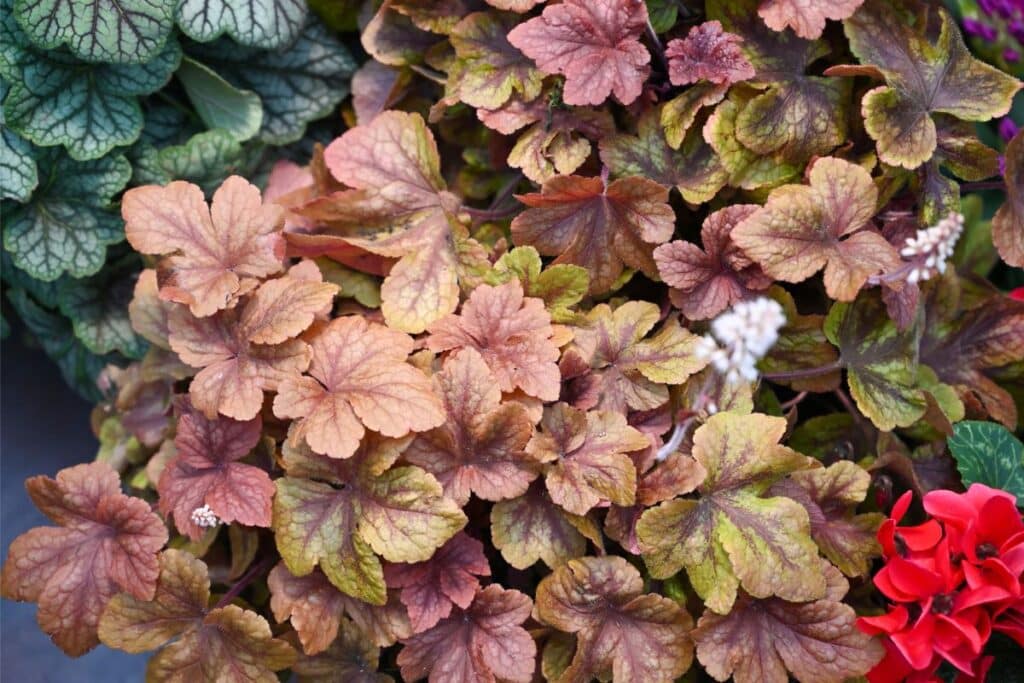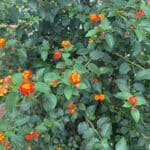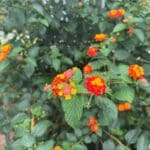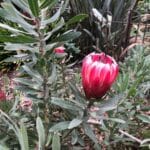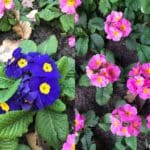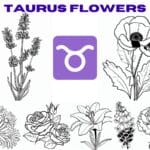If you love bold and beautiful foliage colors then you will love having a collection of Coral bells (Heuchera villosa).
This foliage, also known as alum root, is a perfect garden addition for anyone who wants to add texture and color to garden beds. This foliage can be used as a border plant and is also extremely useful for filling out blank patches in your garden or for those who are looking for a living mulch that can protect and keep the soil underneath trees nice and cool.
Landscaping designers love to include coral bells in their designs because this colorful foliage is versatile, they come in a wide range of colored leaves and can successfully be paired with a huge variety of other plants.
In this guide, we are going to take a look at some of the best garden plants to add to your coral bell garden and the best ways to grow them alongside other growths for optimal effect.
What to Plant With Coral Bells
Before you start considering the many different companion plants for coral bells, you should first take a look at what color varieties of coral bells you can find.
There are many foliage color options like black, purple palace, apricot, silvery, toffee, green spice, and a couple more and they can also produce adorable pink showy flowers on a tall spike during their growing season.
The bright-colored foliage and gorgeous flower spikes can create a very interesting look in your garden all on their own and there is absolutely no reason you can’t plant different varieties together for a striking effect.
When you grow coral bells with other vegetation, you should focus on plants that have similar growing needs as these low-profile plants.
The foliage prefers shade gardens with dappled sunlight throughout the day but can also grow well in full sun. They need rich, moist soil that drains well and grows well in USDA hardiness zones 4 – 9.
Let’s take a quick look at some of the best coral bells companion plants to pair in your garden.
Japanese Painted Fern
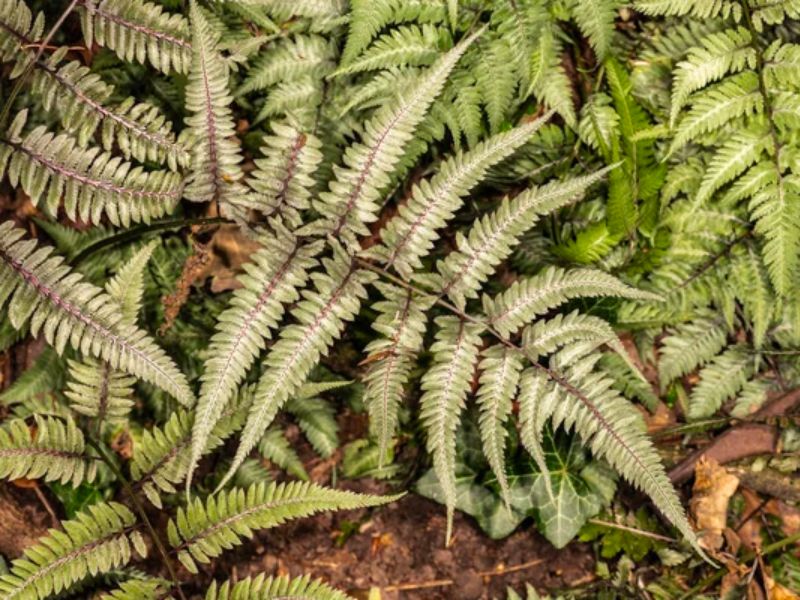
Japanese-painted ferns (Athyrium niponicum), also known as the black lady fern or oriental lady fern, are very common in coral bells gardens.
These perennial ferns don’t produce flowers but they do have striking silver/grey, green, gold/yellow, or purple/lavender leaves that will add lots of contrast to your garden. The spiky leaf design of the foliage will also create lots of texture alongside the showy lobed leaves of the coral bells plant.
Black lady ferns flourish in shade garden environments and should be established in the darkest part of your garden. The showy plants are terrific for repelling deer and can be used as a sunny border plant around garden beds or a filler plant underneath other foliage.
It is usually better to establish your black ladies behind coral bells because they are slightly taller with a height of 12 – 24 inches (30-60 centimeters) while your plant will only reach a height of 6-12 inches (15 – 30 centimeters).
We also recommend you grow a contrasting color (dark against light or bright against dull) of ferns behind your coral bells so these plants will be more pronounced.
Hostas

Hostas (Plantain lilies) are frequently spotted in shade garden beds because they do a fine job of brightening up these dark areas with their vivid leaves.
A lot of landscapers enjoy pairing different varieties of hostas and coral bells in mixed garden beds because all of this leafy foliage will create a very impressive display of color.
These virtually carefree plants love rich soil types and they need to be watered regularly if the weather is hot. They get along just fine with coral bells but dislike tree roots. If you are growing hostas underneath a tree, you might want to consider growing them in pots.
When you are pairing hostas and Heuchera plants, there are two important things to consider.
Firstly, you need to consider the height of the hosta variety you have. Taller hosta varieties can grow up to 24 inches tall and should be established behind coral bells. Shorter varieties can be paired within the same garden bed amongst your hostas.
The other important factor to keep in mind is color. As with coral bells, these companion plants come in various shades including mixed leaf colors. For a striking effect, you should pair contrasting coral bells and hostas in the same garden bed.
Growing coral bells and hostas in garden pots to create outdoor arrangements. Taller hostas in a pot with vividly colored coral bells around them can create a very appealing bouquet or foliage arrangement.
See more: What pairs well with hosta plants
Astilbe
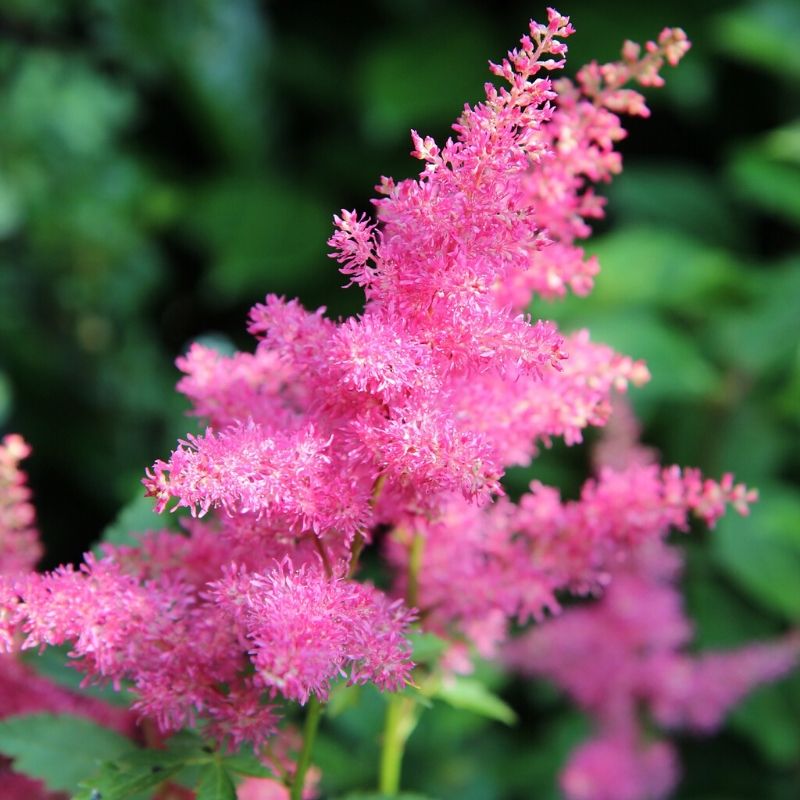
If you want to add a dash of color to your garden then we recommend Astilbe (Astilbe Chinensis) flowers. The shade loving perennials are also known as false goat’s beard or false buck’s beard because they create spiky florals that look a little bit like the beard of a goat.
When astilbe plants start to bloom in early spring to early summer, they will produce an abundance of flower stalks in shades of white, pink, purple, or red.
Dwarf astilbe varieties are ideal companions because they grow well in USDA hardiness zones 3 – 8 in moist soils and they can be grown in partial shade or even full sunlight.
The dwarfed varieties have a similar height to coral bells and their complementary colors will look divine if you pair them in the same garden bed as your other delicate foliage.
If you are growing taller varieties of astilbe then you should remember to grow them in the background which can be troublesome since astilbes need a little bit more sun than coral bells.
Hellebores
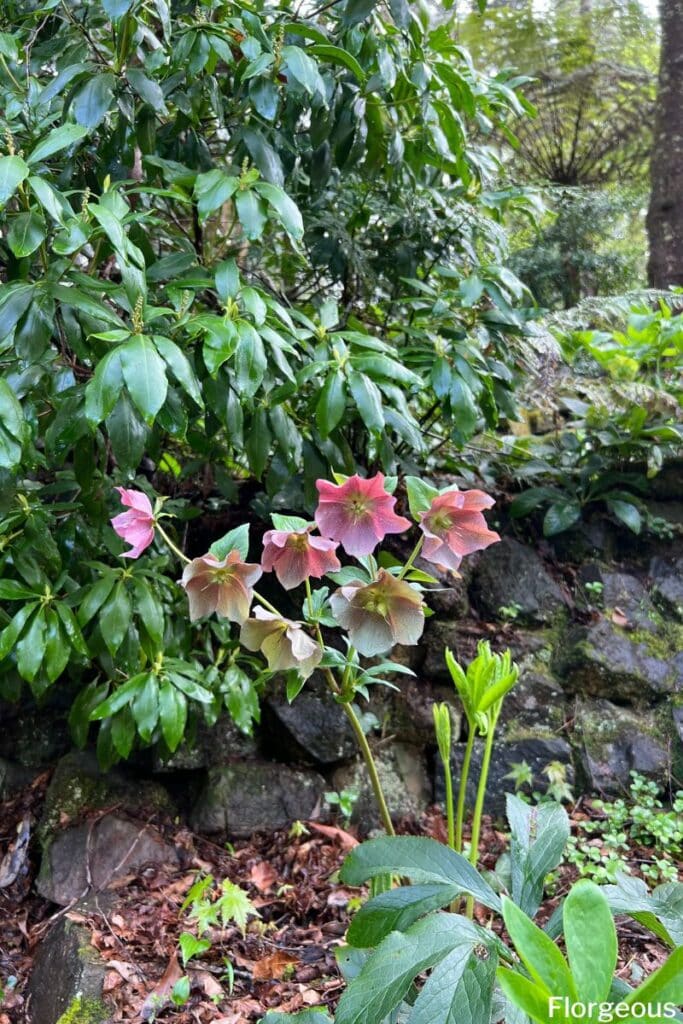
Hellebore flowers (Helleborus orientalis), also known as lenten roses, are also good companions to coral bells if you want to add a dash of color to your garden but don’t want to overpower your shrubs.
The foliage of this perennial plant is bottle green with broad leaves that can add lots of texture to your garden. These bushy plants will bloom during wintertime and are great for adding a bit of winter interest with their pale pink dainty flowers.
These plants can be interplanted in your coral bells garden because they only grow up to 18 inches (45 centimeters) tall and they don’t bush out too much. Lenten roses also love light shade garden types, well-drained soil conditions, and a neutral alkaline level. With these growing conditions, these two plants will flourish without any additional care or work from your side.
See more: What to plant with hellebores
Daylilies
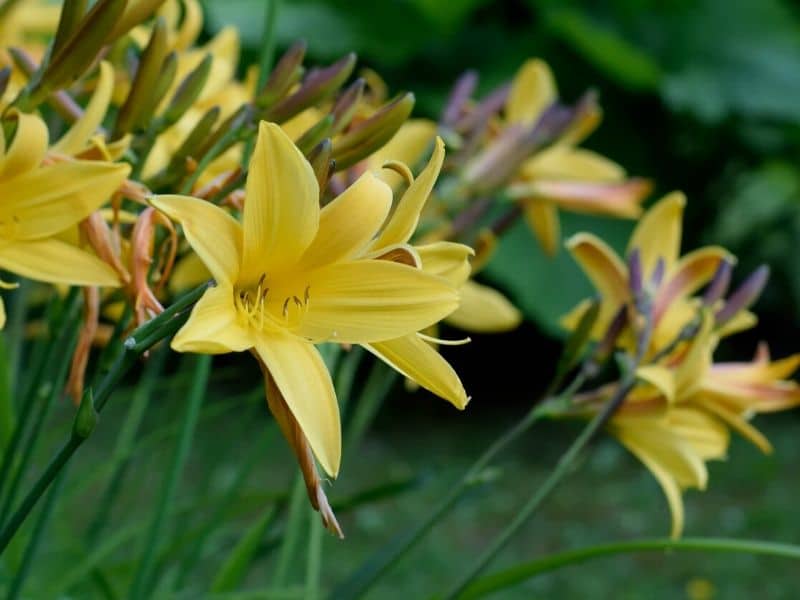
Many types of daylilies (Hemerocallis spp.) are a good option if you want to increase the texture of your garden beds and brighten up your garden throughout summer.
These bulb plants have foliage that looks a bit like a green waterfall with long spiky leaves emerging from a central area and expanding up and outward. They produce bell-shaped flowers on stems and there are many different varieties that range from pink to white flowers.
In colder climates, the spiky lime green leaves will add lots of lush contrast and in summer, the delicate flowers will add lots of colors and attract lots of pollinating insects.
These flowering plants will grow well in your garden because they can be grown in full sunlight or in a shady spot. They grow well in well-draining soil but require a lot of organic matter. The flowers are easy to grow because they can be quite drought tolerant thanks to their bulb root systems.
Daylilies can be planted alongside coral bells because these florals are a little bit taller.
See more: What to plant with daylilies
Japanese forest grass
Japanese forest grass is prized for its versatility and adaptability, making it an excellent choice to underplant or intermingle with coral bells. The grass’s ability to thrive in moist, well-draining soil aligns well with the preferences of coral bells.
The height of these ornamental grasses can range from around 12 inches to 18 inches (30 to 45 cm) on average, with some varieties potentially reaching slightly taller heights. This grass’s compact and mounding growth habit makes it an ideal companion for coral bells, which often have a more upright or clumping form.
This height variation adds depth and dimension to the garden, creating a visually appealing tapestry of colors and forms. Gardeners can play with these characteristics to design unique and harmonious plant combinations in their landscapes.
FAQs
Where is it best to plant coral bells?
It is best to plant coral bells (Heuchera) in well-draining soil in locations with partial to full shade. While some varieties can tolerate more sun, many coral bells prefer the protection of shade, especially in regions with hot summers.
Which coral bells are best in shade?
Coral bells that are well-suited for shade include varieties like Heuchera ‘Obsidian,’ ‘Green Spice,’ ‘Plum Pudding,’ and ‘Electra.’ These cultivars thrive in shaded conditions, showcasing their attractive foliage colors without being exposed to direct sunlight.
Final Thoughts
Planting coral bells with all sorts of shade-loving plants like hostas, painted ferns, astilbe flowers, lenten roses, and daylilies is a good idea. All of these combinations can help you create a very interesting garden bed.
We hope that our companion plants for heuchera guide made it a little bit easier for you to choose the right neighboring plants to add to your woodland gardens. And if you need more advice on what to grow with other garden plants then you should have a look at some of our other guides.
See more:
*image by azadjain001/depositphotos

